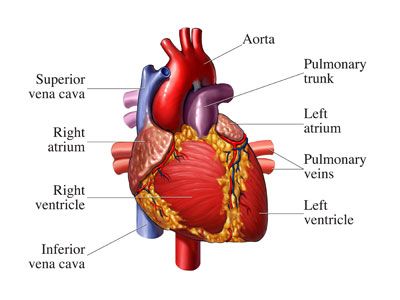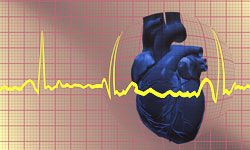As a vital part of the body's chemistry, cholesterol is used to produce the steroid hormones required for normal development and functioning. These include the sex hormones estrogen and progesterone in women and testosterone in men. These hormones trigger development of the physical traits characteristic of adult women and men; they also play a role in reproduction.
Other steroid hormones produced from cholesterol include cortisol, which is involved in regulating blood-sugar levels and defending the body against infection, and aldosterone, which is important for retaining salt and water in the body. The body can even use cholesterol to make a significant amount of vitamin D, the vitamin responsible for strong bones and teeth, when the skin is exposed to sunlight.
Advertisement
Cholesterol is also used to make bile, a greenish fluid that is produced by the liver and stored in the gallbladder. The body needs bile to digest foods that contain fat. Bile acts as an emulsifier -- it breaks down large globules of fat into smaller particles so they can mix better with the enzymes that digest fat.
Once the fat is digested, bile helps the body to absorb it. The presence of bile in the intestines is required before cholesterol can be absorbed from foods. The body also needs bile in order to absorb vitamins A, D, E, and K, called fat-soluble vitamins, from food or supplements.
Your body has the ability to make all the cholesterol it needs for these various functions. A diet that contains animal products, however, also supplies cholesterol to the body. In an effort to balance these two sources of cholesterol, your body adjusts the amount it produces each day.
For example, if you eat many foods from animal sources, your body gets a substantial dose of cholesterol from the diet, called dietary cholesterol; your body then slows down its own production of cholesterol. On the other hand, when most of the foods you eat come from plant sources, your body manufactures more cholesterol in order to meet its needs.
Your body can also eliminate some excess cholesterol through bile. Whenever bile is released into the intestine, a portion of it is absorbed back into the body to be used again. The remaining bile is excreted in the feces. To help maintain the cholesterol balance, the body can dissolve excess cholesterol in the bile and can also convert more cholesterol into bile acids so that the cholesterol will be excreted with the feces.
For more information on cholesterol, see:
- Cholesterol Levels: We all know there's "good" and "bad" cholesterol. Find out why you need more of one kind of cholesterol and less of the other.
- Causes of High Cholesterol: Diet and DNA are the main sources of cholesterol. Learn why the numbers might be high in your case.
- Consequences of High Cholesterol: Cholesterol leads directly to heart attacks. Find out what other conditions it can cause.
- How to Lower Cholesterol: Like many conditions, eating right and exercising will control cholesterol. Learn what that means for you.
- How Cholesterol Works: Cholesterol is essential to the body. Find out why we need it and how much is too much.
Advertisement

